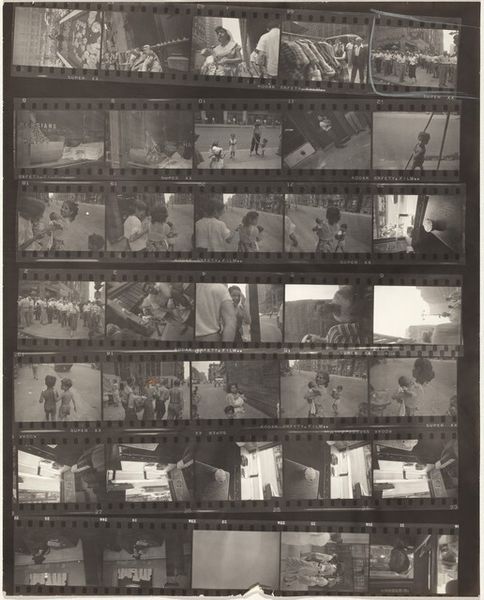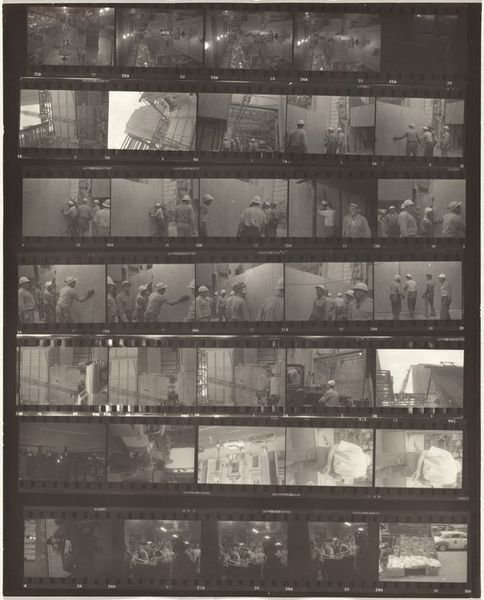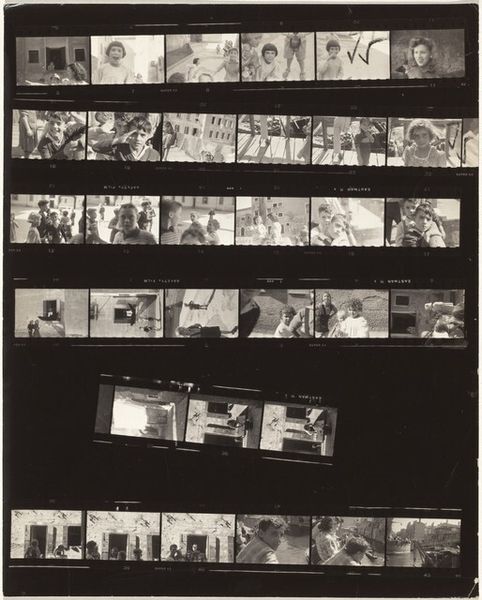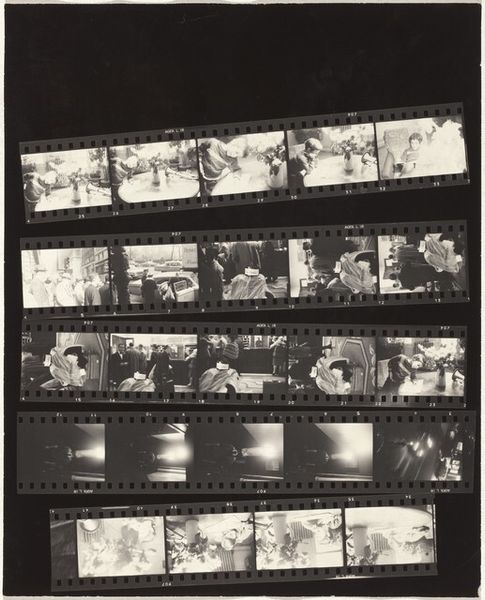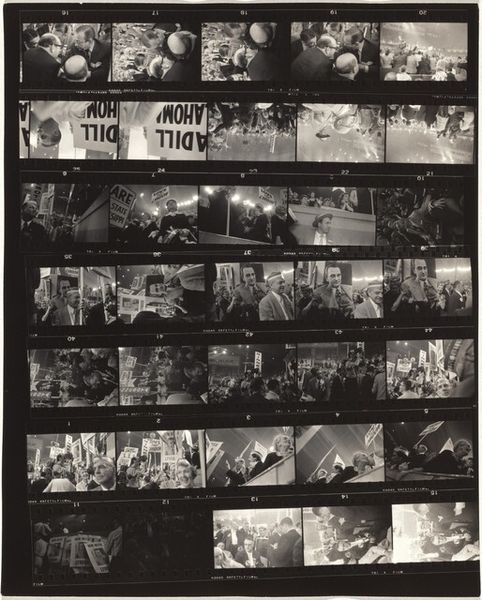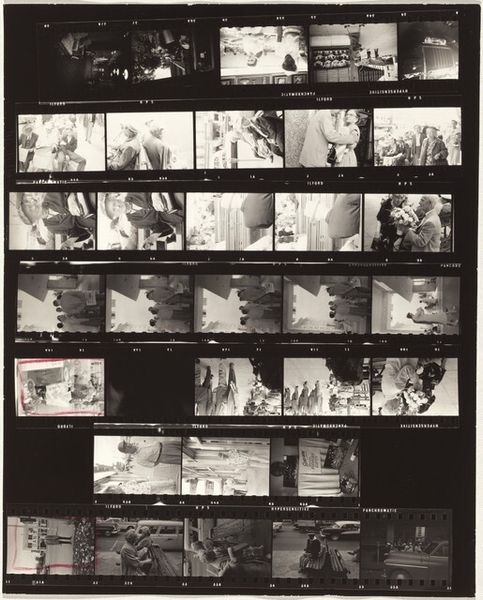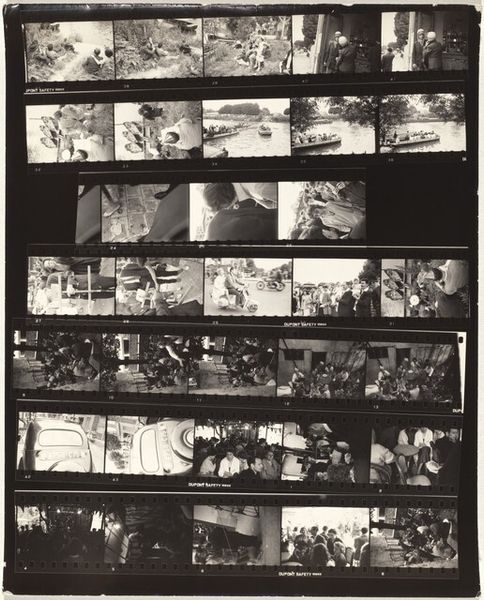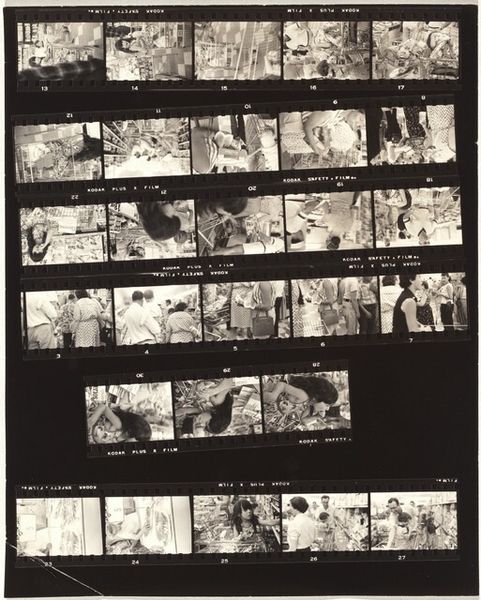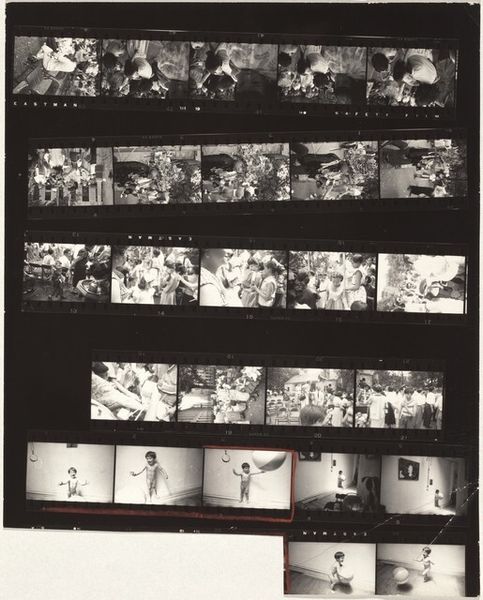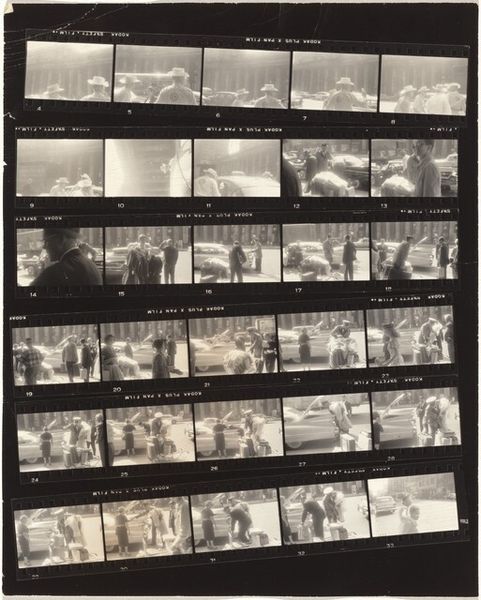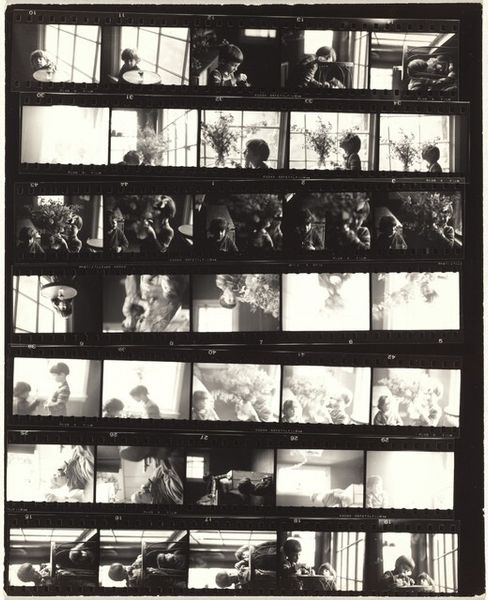
Dimensions: sheet: 25.2 x 20.2 cm (9 15/16 x 7 15/16 in.)
Copyright: National Gallery of Art: CC0 1.0
Curator: Today, we are exploring "Communion 2", a gelatin-silver print made in 1959 by Robert Frank. The piece shows multiple frames of negatives, seemingly from street photography. Editor: It’s like peeking into someone else's scrapbook. Raw, unedited moments frozen in monochrome. I can almost smell the fixer! It's not classically beautiful, but arresting, haunting even. Curator: Frank was instrumental in challenging conventions. Let's consider this within the historical context of the late 1950s, a period of supposed American prosperity, yet Frank chose to focus on marginalized communities, moments of social unrest. These specific frames give particular attention to white-clad girls—most obviously on their First Holy Communion, yet it’s uneasy. Editor: Uneasy is the perfect word! The framing feels chaotic, like snatched glimpses rather than posed perfection. You've got these beautiful white dresses contrasted with grimy city backgrounds. Is he romanticizing the innocence, or exposing something sinister underneath the façade? Curator: I would argue both can exist, simultaneously and in tension. The fragmented form, using the original negative strip, perhaps speaks to an idea of truth. Photography offers a reality that is far from singular or simple. Instead we can perceive various narratives overlapping. There’s an element of Catholic guilt in the framing. Editor: Guilt, yeah, absolutely! Like fragments of memory, half-remembered sins lurking in the back of the mind. It's the kind of thing that hits you in the gut. It's amazing how a picture—well, a series of them—can stir up such complex emotions. I feel nostalgia for an event that probably would have traumatized me as a kid. Curator: His series of photographs, titled “The Americans” made around the same period received a lot of hostility originally, but that is because Frank sought to challenge the status quo in a segregated and politically tumultuous United States. It showed the unseen elements, poverty, and social exclusion. His choices regarding content, film, framing, editing have allowed other socially motivated and marginalized photographers to rise. Editor: Looking at this again, it’s got that rough, DIY feel, that really communicates his ethos. This makes you feel like you could make a similar thing today! Curator: I hope that our brief discussion has illuminated both the art historical significance of Frank's photograph, and also something of its affective and artistic power. Editor: It definitely makes me want to grab my old camera and see the world through his eyes, flaws and all.
Comments
No comments
Be the first to comment and join the conversation on the ultimate creative platform.
